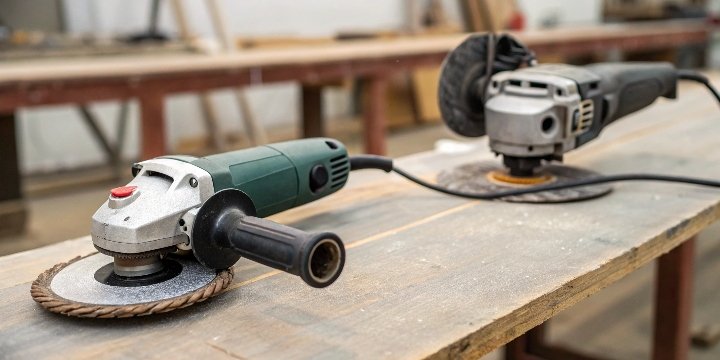
Your sanding project is tough, and your regular sander is not powerful enough. You look at your angle grinder. It has the power, but is it the right tool for the job?
Yes, you can absolutely use an angle grinder as a sander. You need the right accessories, like a backing pad and sanding discs. This turns your grinder into a powerful tool for aggressive sanding on materials like metal and wood, perfect for rough jobs and quick material removal.
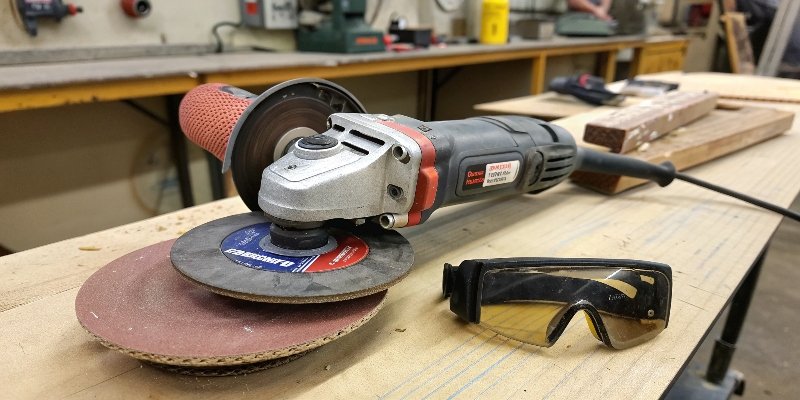
Using an angle grinder1 for sanding can be a fantastic time-saver, but it’s not a simple swap. This tool is a beast compared to a delicate finish sander. Its raw power is great for stripping paint or rust, but it can also ruin your project in seconds if you’re not careful. I’ve seen it happen many times. So, before you start, you must understand how to set it up correctly, what jobs it’s good for, and, most importantly, how to stay safe. Let’s get into the details so you can make this powerful tool work for you, not against you.
Can angle grinders be used for sanding?
You face a large surface that needs heavy sanding. A standard sander feels too slow and weak for the task. You need more power and speed to get the job done efficiently.
Absolutely. Angle grinders are excellent for heavy-duty sanding, especially on metal and wood. Their high speed and power make them ideal for stripping paint, removing rust, and shaping materials quickly. Just be sure to use the right accessories and safety gear for the job.
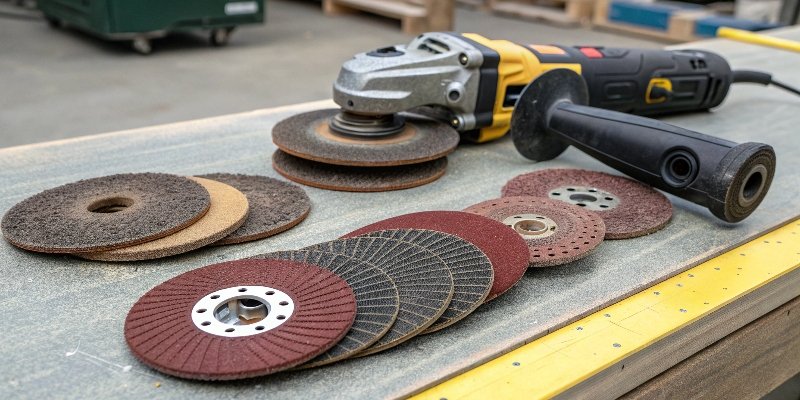
Using an angle grinder for sanding isn’t about just wishing it would work. It’s about a proper conversion. The heart of this change is getting the right accessories. I’ve been in this business for nearly 30 years, and I can tell you that the quality of your accessories makes all the difference. You can’t just stick a piece of sandpaper on the tool.
How to Convert Your Angle Grinder for Sanding
First, you need a backing pad2. This is a rubber or plastic disc that screws directly onto your grinder’s spindle, usually an M14 or M16 thread. The pad provides a flat, stable surface for the sanding disc. Next, you attach the sanding disc to the pad. These discs come in various materials and grits, so you have to choose the right one for your specific project. It’s a simple setup, but the details matter.
Here is a simple breakdown of which disc to choose:
| Material to Sand | Recommended Disc Type | Common Grit Range |
|---|---|---|
| Metal (Rust/Paint) | Aluminum Oxide Fiber Disc | 80 – 240 Grit |
| Wood (Rough Shaping) | Silicon Carbide Disc | 60 – 180 Grit |
| General Purpose | Zirconia Flap Disc | 40 – 120 Grit |
Choosing the wrong disc can lead to poor results or even damage your workpiece. For example, using a disc meant for wood on a metal frame will just shred the sandpaper instantly. Getting this right is the first step to success.
Can I turn my grinder into a sander?
You want a versatile tool in your workshop. Buying separate tools for grinding and sanding costs space and money. A simple conversion could give your angle grinder dual functionality and save you both.
Yes, turning your grinder into a sander is straightforward. You just need a backing pad that screws onto the grinder’s spindle and adhesive-backed or hook-and-loop sanding discs. This quick changeover makes your angle grinder a wonderfully versatile tool for many material removal tasks.
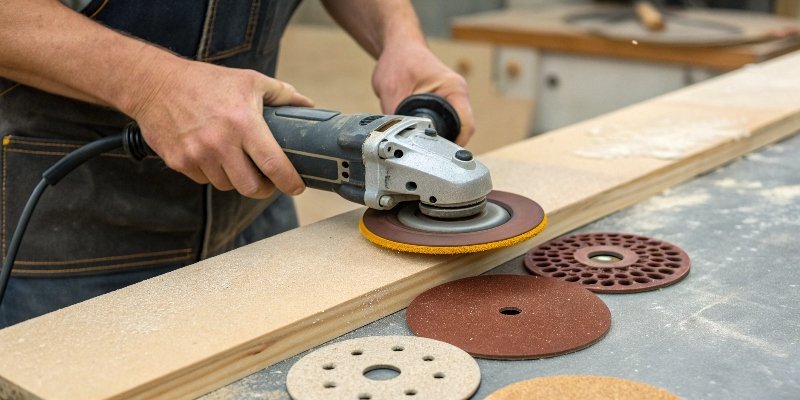
Once you have the right attachments, your success depends on your technique. An angle grinder has a lot of power, and it spins very fast. This is very different from a standard orbital sander. You cannot use it the same way. I remember a customer who tried to sand a tabletop with his grinder like it was a finishing sander. He ended up with deep, circular gouges all over the wood. He had to replace the entire piece.
Tips for Effective Angle Grinder Sanding
First, control the speed. Many modern angle grinders have variable speed settings3. For sanding, you want to use a lower speed, ideally under 8,000 RPM. High speeds generate too much heat. This can burn the wood or melt the paint you are trying to remove. It also wears out your sanding discs4 very quickly.
Second, use light pressure and keep the tool moving. Let the tool do the work for you. If you press too hard, you will dig into the material and create an uneven surface. You must keep the grinder flat against the surface and move it in broad, sweeping motions. Do not hold it in one spot for too long. This approach ensures you remove material evenly without causing damage.
What should you not use an angle grinder for?
Angle grinders are incredibly powerful. That power can be very useful, but it can also be dangerous if you misuse it. Knowing the limits of the tool keeps you safe and protects your work.
Never use an angle grinder for tasks that require fine precision or a delicate finish. Its high speed and aggressive nature make it unsuitable for polishing delicate surfaces or making intricate cuts. Also, you must avoid using damaged discs or operating it without the safety guard.
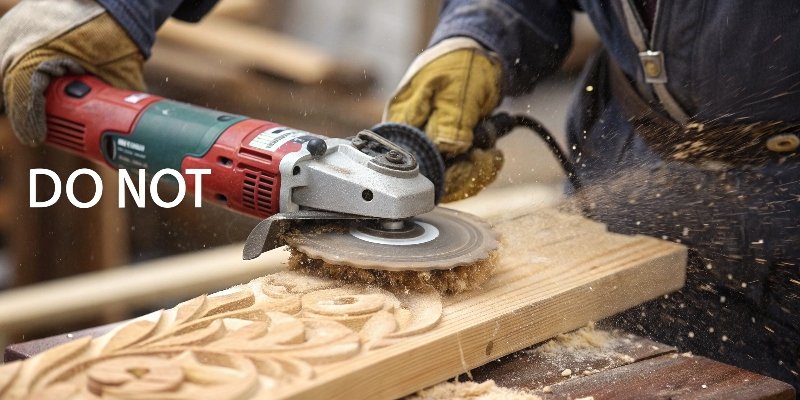
An angle grinder is a tool for bulk material removal, not for finesse. If your goal is a smooth, paint-ready surface on a piece of furniture, an angle grinder is the wrong choice. It will leave swirl marks that are very difficult to remove. For those jobs, you need a different tool.
Knowing the Boundaries: Grinder vs. Sander
Think of your angle grinder as the first step in a multi-step process. It is perfect for the rough work, like removing an old, thick finish or leveling a rough slab of wood. But after that initial stage, you need to switch to a more suitable tool. A random orbit sander, for example, is perfect for creating a smooth finish because its motion is less aggressive and doesn’t leave a predictable pattern. A belt sander is great for flattening large surfaces quickly but with more control than a grinder.
Every tool has a purpose. Here at our factory, we manufacture a wide range of abrasive products. We understand that using the right tool and the right abrasive for the job is the key to quality work. Trying to make one tool do everything often leads to frustration and poor results. Respect the tool’s limitations.
Can you put a sanding disc on an angle grinder?
You have a sanding disc and an angle grinder. You need to attach the disc to the tool. It’s not as simple as just slapping it on, as that would be incredibly unsafe.
Yes, you can put a sanding disc on an angle grinder, but not directly. You must first install a compatible backing pad. This pad screws onto the grinder’s arbor. The sanding disc then attaches securely to this pad, creating a stable connection that is safe for operation.
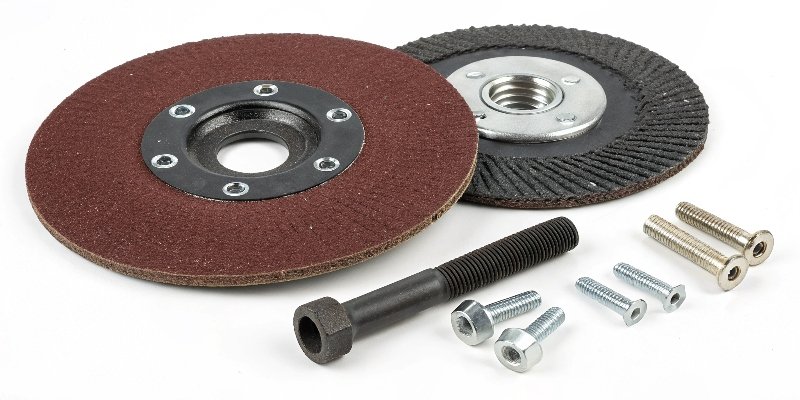
Safety is the most important thing when you use a power tool, especially an angle grinder. Its speed and torque can cause serious injury if you are not prepared. When you use it as a sander, there are specific risks you need to manage. Sanding creates a huge amount of dust and vibration.
The Right Setup for Safety and Performance
Your safety gear is not optional. You must wear safety glasses to protect your eyes from flying debris. A dust mask is also essential because sanding dust, especially from old paint or treated wood, can be toxic. I also strongly recommend wearing thick, anti-slip gloves. They will help you maintain a firm grip and absorb some of the tool’s heavy vibration.
Always use the auxiliary handle that came with your grinder. It provides a second point of contact, giving you much better control. Trying to operate an angle grinder with one hand is a recipe for disaster. Vibration is a big issue. It can make your hands go numb and lead to you losing control.
Finally, remember that the sanding discs wear out fast. Because of the high speed, a single disc might only last for about 10 minutes of continuous use. Check it often for tears or wear. Using a worn-out disc is ineffective and unsafe.
Conclusion
An angle grinder can be a great sander for rough and heavy jobs. To make it work, you must use the right backing pad and disc. Always remember to prioritize your safety first.
-
Explore how angle grinders can enhance your sanding projects with their power and versatility. ↩
-
Find out how the right backing pad can make your sanding tasks safer and more effective. ↩
-
Understand how variable speed settings can enhance your control and results during sanding. ↩
-
Learn about the various sanding discs available and how they can improve your sanding efficiency. ↩
Written by
leeon
You may also be interested in:
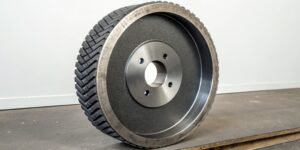
What's the application of CBN Wheels?
Struggling with grinding hard steels? Frequent wheel changes and poor finishes can hurt your bottom line. We have found that CBN wheels provide the durability
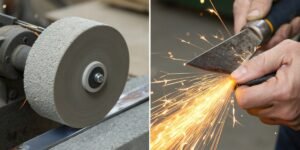
What is the difference between grinding and honing a blade?
A dull blade is a frustrating problem. It slows down production and ruins your workpiece. Using the wrong technique to fix it can cause permanent
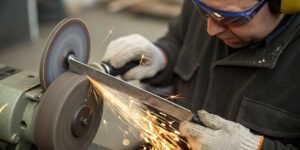
How to sharpen a knife on a bench grinder?
Is your dull knife slowing you down? A bench grinder seems like a quick fix, but you’re worried about ruining the blade. You need a
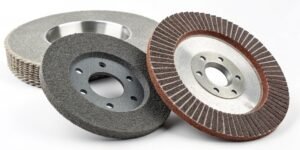
How to judge the quality of a grinding wheel?
Choosing the wrong wheel wastes money and ruins parts. Poor quality leads to downtime and rejection. A few key checks can guarantee you pick the

What is low stress grinding?
Struggling with parts failing due to hidden stress from grinding? This common issue causes cracks and reduces component life, costing you money. Low stress grinding
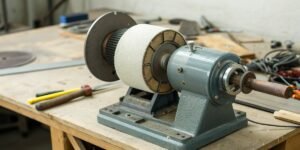
The rotor in my reluctance motored bench grinder won't spin?
Your bench grinder is humming, but the wheel isn’t moving. This frustrating problem can stop your work dead. It’s a common issue, and the fix
